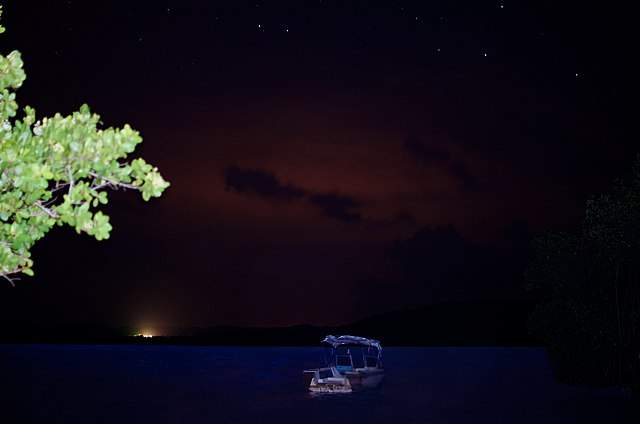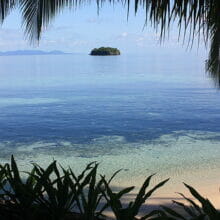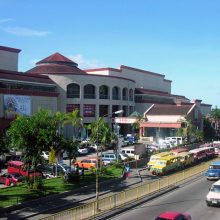9 Places to See the Surreal Beauty of Bioluminescent Beaches

The light emitting living organisms are found throughout the world but we are able to see them only in a few beaches. Bioluminescent beaches : Why it is so?
Because, these bioluminescent creatures are mostly found to be living near the sea-floor than the sea surface. When you see them on the surface, the water turns into a dreamy blue.
Even then, you cannot single out a creature but can only see the sea water sparkles with brilliant blue light. A school of light-emitting creatures are essential to clearly see the luminous light. A single organism here and there can create the magical light effect on the water.
Isn’t it incredible?
Do you know why they emit light?
The reasons are many and really interesting to know why such creatures emit light.
One of them really startled me. They emit light to find their mates!
Other reasons for the light emitting organisms include:
To find their prey
To ward off the predators and defend themselves
Which marine creatures possess the ability for bioluminescence?
Jelly fish species possess this amazing feature. Other marine lives include crustaceans, star fish, shrimp and squids.
Astonishingly, even some sharks are bioluminescent.
When I found these facts about bioluminescent beaches, I asked myself a question. Why it should be always greenish-blue and why not fiery red or flaming orange!
The answer for my question goes like this:
The greenish-blue light’s wavelength is shorter and hence the light can reach longer distance.
9 Places to See the Surreal Beauty of Bioluminescent Beaches
Enough of science!
Let us see the list of places where we can see bioluminescent beaches in the world.
Toyama Bay, Japan
Toyama bay is part of the Sea of Japan. To see the bioluminescence here, you have to travel nearly 350 km north of Tokyo.
The cause of bluish water in this beach is ‘firefly squid’.
See how the water sparkled when the firefly squids are alive and swimming in the water.
Next, see their light rust colored body when they are trapped and brought up to the surface.
Did you notice the absence of blue light at this stage? So, the bioluminescence is true to the word ‘bio’; these marine lives are able to emit light only when they are alive in the water. In addition, you can see and admire the bioluminescence only in the night.
Glowing Beach, Goa, India
I remember reading that India has more bioluminescent beaches than any other country.
I think this fact is not widely known, even among ardent beach lovers. But, I am sure the Govans (people of Goa) are aware of it because they are proud of their beaches and their favoritism among the tourists.
Betalbatim Beach is known as the glowing beach in Goa. It is sandwiched between Majorda and Colva Beaches, the two most visited beaches in Goa.
The Betalbatim Beach starts attracting the crown around 6 pm because, the sunset is better viewed from here. It is a rather long beach measuring 1 km in length and thus can accommodate hundreds of people at a time.
Like so many bioluminescent beaches in the world, this Govan beach also bioluminescent only during November and December, the winter season in India.
Search for hotels in Salcette in South Goa because the Betalbatim Beach is here..
Puerto Mosqhito Bioluminescent Bay

Did you notice a speck of blue in the sea? This Mosquito Bay where you can watch the fantisctic bioluminescebce phenomenon is in Vieques Island, Puerto Rico.
Puerto Rico itself is a group of islands floating in the Caribbean Sea, located some 1600 km east of Miami, Florida.
The Guinness book of world records cited the Mosquito Bay as the Brightest Bioluminescent Beaches in the world in 2006.
I think it still retains that prestigious mention.
Do you know?
Do you know these bioluminescent organisms are also called “Phytoplankton”?
Another attraction of Vieques Islands is the presence of freely roaming Paso Fino horses with distinct gait.
Yes, this horse breed looks slightly different. It appears taller because of its prominent gait.
Mattu Beach, Karnataka
It is unfortunately a rather unknown and less-visited beach in Karnataka, India. It is located some 50 odd km from Udupi Town, a famous pilgrimage center in Karnataka.
Interestingly, Udipi is also famous for ‘satvik’ vegetarian cuisine.
Mattu Beach is rarely visited after dark. But, it is only then the beach turns into magical blue because of the bioluminescence.
The cause of the bioluminescence in Mattu Beach is the single-celled “dinoflagellate”. This is the second bioluminescent beach in India.
Vadhoo Island, Maldives
Indian Ocean in this island sparkles so densely and widely with greenis0blue light, it is called the ‘sea of stars’.Vadhoo is not evn an island but only an ‘atoll’.
If you are touring Maldives, take a speed boat from Male in the night. It is only a 15 minutes ride.
Here is some confusion for me. I read the Vadhoo Island which is a part of RAA Atoll is located about 190 km from Male, the capital of Maldives. If it is correct, how, one can reach it in just 15 minutes in a speed boat?
As you near the Vadhoo Atoll, you will let out an audible ‘wow’ seeing the bioluminescence.
The “dinoflagellates” again are the light-emitting organism in Vadhoo Island.
They emit light when in an agitated status. I think it’s safe to yield to your urge and plunge into the ocean which is brightly lit by the dreamy bioluminescence.
Bhangarm Island, Lakshadweep
Bhangaram Island is inexplicably uninhabited. The turquoise water, abundant corals, diverse marine species and above all, the bioluminescence that is more brilliant because of absence any artificial light nearby, warrants a sought-after tourist destination.
Nonetheless, no one lives here.
Reaching Bangaram Island is a bit time consuming. From Agatti Island, a boat takes nearly two hours to get you there. Incidentally, Agatti is the capital of Lakshadweep Islands archipelago.
Luminous Lagoon, Jamaica
It is popular among the Jamaicans only. The majority of the tourists are oblivious of the beautiful lagoon that glows with bioluminescence.
If you are touring Jamaica and have reached the town of Ocho Rios, you can hire cab and go to see the bioluminescent lagoon. It is 65 km west of Ocho Rios.
Alternatively, you can join a boat tour to the bioluminescent lagoon. The tour departs from Ocho Rios just an hour before sunset.
After the boat has moved to some distance in the luminous laggon, the passengers jump down from the boat to get into the water, mainly to see the light-emitting phytoplankton.
As I already mentioned, the light is emitted when the organisms are in agitated status.
So, if you start splashing the water, they are more disturbed and the blue-green light is more clear, and strong.
Several companies offer guided boat tour to the bioluminous lagoon.
Holobox, Mexico
Holobox is an island in Mexico. The beaches here turn into magical bluish glow when it rains. I think that is when the phytoplankton organisms come to the surface to find their mates!
Wikipedia calls it as “Isla Holobox”. The island is part of Quintana Roo, one of the states in Mexico.
Tourists who go to the Yucatan Peninsula can easily access the Holobox Island.
In order to see the bioluminescence on this island, you need to travel a bit towards the island’s western end.
Punta Cocos is the name of a lagoon under which the microorganisms live.
Image attached
It is a lovely beach with white sand and blue water.
Havelock Island Beach, Andaman Islands
On this tropical island’s beach, the bioluminescent organisms are seen in abundance. Hence, the bluish glow is very bright and clear.
However, this extraordinary phenomenon can be seen only in the months of November and December.
Havelock is quite large and thickly populated. Tourism is alive and kicking on this Andaman Island. Quite a lot of hotels are available in Havelock Island. November and December are the best months to visit this tropical beauty.
On further research, I learned more than 1500 species of microorganisms, jellyfish, squids, shrimps, and starfish are capable of emitting the surreal bluish light.




